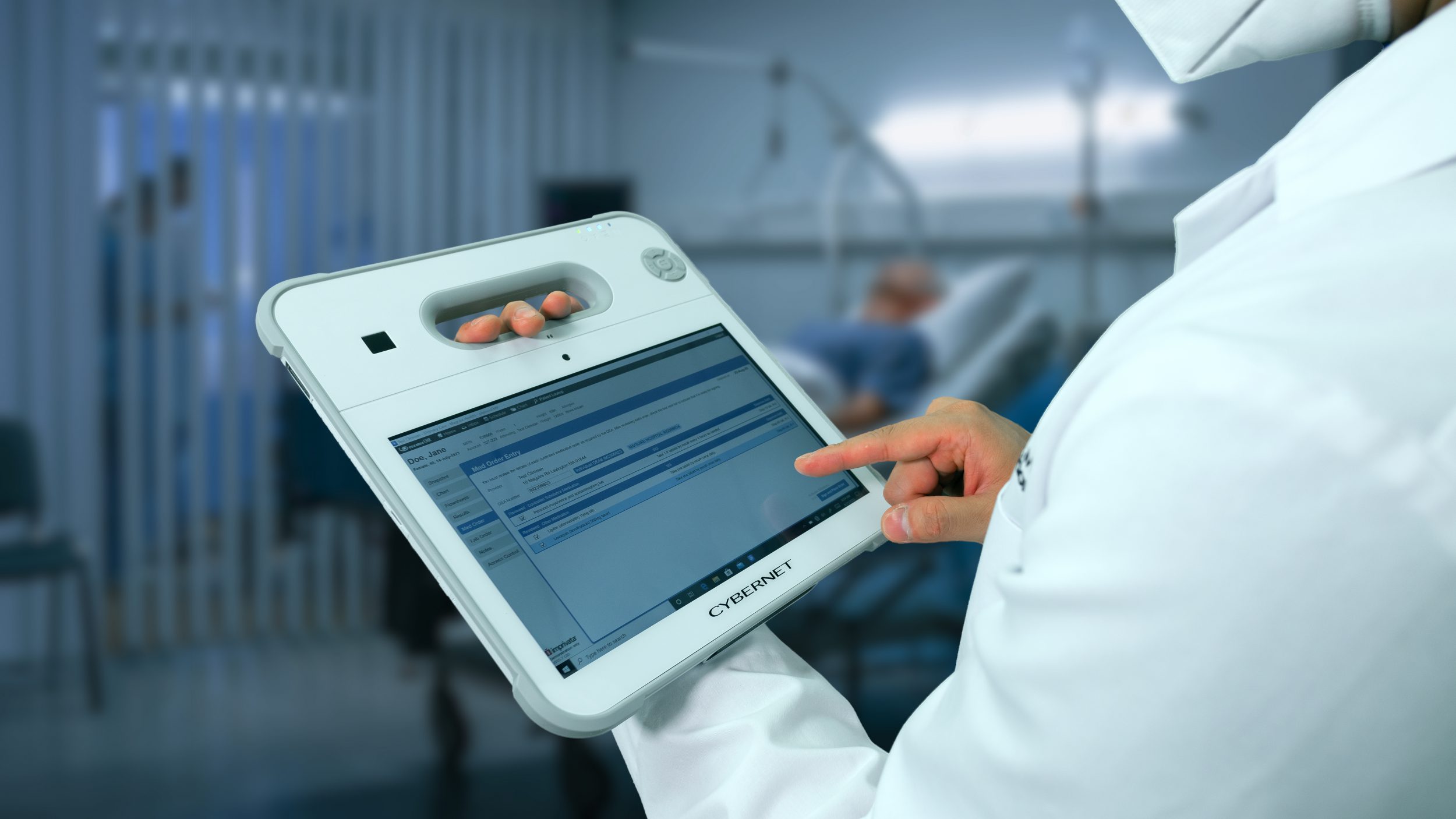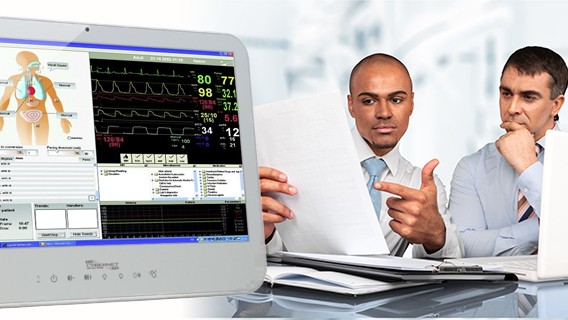In the health care setting, success requires coordination and efficient communication across multiple disciplines and specialties. Issues can occur at any stage of communication – in the management of urgent issues, or in situations when multiple members of the care team contribute to treating a patient. The value of efficient communication in healthcare can not be underestimated – it is critical in delivering patient care, especially under the Accountable Care Act.
Poor or inefficient communication contributes to the rising costs of care. A 2010 study estimated that communication inefficiencies among care providers cost the taxpayers $12 billion per year. A 2014 Ponemon study of the economic impact of inefficient communication in healthcare estimates that number to be $11 billion per year.
Roadblocks
Article Guide
What are the main roadblocks that prevent organizations from addressing the communication challenges effectively? We can categorize these roadblocks as people-, organization- and IT-related.
People:
- The way medical teams and the workflow are organized does not foster close coordination. The teams often consist of transient members providing care to numerous patients on a number of teams. The transient nature of teams hampers inter-professional relationships, camaraderie and, thus, communication.
- A patient can go through multiple clinicians in one day. It increases the likelihood of errors, and omission of key information, which makes it difficult to align care activities and forge an overall care plan so that each clinician understands it.
- The overwhelming workload hampers innovation. For example, EHR notifications alone take at least one hour a day from the primary care doctors’ workday. On average, doctors have to process 77 EHR notifications a day, which makes their work harder to endure because that time is not compensated in an environment of reduced reimbursements for office-based care.
Organization:
- Organizations mostly focus on order entry, EHR, and documentation rather than efficient communication.
- Compliance needs outweigh efficiency needs.
- The implementation of systems that help measure performance is difficult and costly, given the complexity of the workflow.
- Organizations often struggle to ensure shared commitment from all stakeholders to enhance communication.
- Insufficient awareness of the decision-makers about the affordable IT solutions that solve many of the current and future communication issues.
IT:
- Increasingly complex processes are managed with outdated technology.
- Many IT systems work in silos, which hampers interoperability, communication, and coordination.
- Many IT solutions lack usability, and are difficult and time-consuming to use.
- Compatibility of new IT solutions with the legacy systems, or the lack of thereof.
- Management of a large fleet of different devices, BYOD, and stemming security and compliance concerns.
- Budget constraints, lack of IT staff.
Economic Impact
The Ponemon survey respondents agree that significant time goes to waste at each stage of care. The estimated economic impact of those inefficiencies amounts to $1.75 million per hospital/year, and more than $11 billion per industry a year.
- Admitting one patient on averages takes about 51 minutes, 33 minutes of which (65%) is wasted due to communication inefficiencies. The report estimates each U.S. hospital loses about $728,000 annually due to patient admission-related communication issues.
- Coordinating an emergency response team takes on average 93 minutes, 40 minutes of which (43%) goes to waste, accounting for more than $265,000 loss per hospital annually.
- Transferring a patient to another healthcare facility takes about 56 minutes, 35 minutes of which (63%) is wasted, amounting to $754,000 per hospital per year.
Among the main factors hampering communication are:
- Inefficient, outdated technology.
- Text messaging is not allowed.
- Wi-Fi is either not available or not allowed.
- E-mail is inefficient.
The lack of immediate, live connectivity between team members working on the same patient/assignment/team is the problem that hampers the communication in healthcare in the first place. The availability of compliant, secure technology is another problem.
Solution
Assuming that healthcare organizations do not have sufficient funds to implement complex and risky IT innovations, the solution must provide the highest impact at the lowest cost possible. It also must be scalable, sustainable and cost-efficient in the long term perspective. Medical grade all-in-one computers and medical grade tablets possess the necessary features.
Mobility: Telehealth and mobile technology are pushing the innovation in healthcare. When your teams are empowered with medical tablets that ensure live connectivity on the go, the total time spent per patient decreases significantly. The Houston Fire Department launched a program ETHAN that has outstanding results in improving communication via video conferences, instant messaging and mobile access to EHR. We strongly suggest that you read our coverage of the HIMSS17 session featuring the ETHAN project.
EHR support: it is mission-critical that the computers and mobile devices used in hospitals are EHR-enabled. This way, physicians can update the data on the go instead of spending 2-3 hours of uncompensated time each day to catch up with the electronic “paperwork.” EHR support requires robust hardware found in medical grade tablets and medical computers, but not in consumer grade electronics.
Compatibility with legacy systems: Your IT solutions must interface easily with your legacy systems, future-proofing your new acquisition for your interoperability strategy. RS ports, HDMI, mini and standard USB, and ample capability to run the hardware with minimum wires possible – only medical grade all-in-one computers allow such flexibility.
Advanced connectivity: 3G, 4G, Wi-Fi, Bluetooth, support for any GSM or CDMA operator of your choice – look for no less than a medical tablet or medical grade computer that ships with all these connectivity options. Only that way you can ensure the communication in your organization is ongoing and efficient through secure and compliant devices.
Full-shift uptime and energy efficiency: your medical computers and medical grade tablets must be Energy Star certified. To ensure full-shift uptime, your mobile solutions must come with powerful batteries and an option of hot-swapping them for a set of spare batteries so that your teams are continuously connected. Check out our infographic on hot swappable batteries in medical PCs.
Security: RFID Imprivata Single Sign-On, biometric reader/fingerprint scanner, CAC Smart Card reader, or Kensington lock, coupled with full disk encryption, and Windows authentication ensure your medical staff does not waste time on logins. Security must be user-friendly, and medical computers or medical grade tablets that integrate these peripherals in their build make security simple to implement and use, and compliant with HIPAA.
Safety: sustainable and cost-efficient IT solutions address multiple issues at once. So, your mobile or all-in-one PC solutions must come with antimicrobial* properties to protect the computer casing from deterioration and degradation. Make sure you opt for builds with sealed bezels and sturdy casing that withstands harsh chemical solutions.
IT management, administration: to ensure hassle-free administration, updates, maintenance and troubleshooting, your medical computers and tablets must be Windows or Linux-based for ample remote management options.
Ease of use: to alleviate technology fatigue, look for solutions that make usability one of their focal concepts. Windows-based medical tablets and all-in-one PCs provide the familiarity of interfaces and ample compatibility with productivity software used by your employees.
Device consolidation: this point is critical as it helps organizations invest less but gain more. When the same medical computer or medical grade tablet is used by doctors, nurses and patients at the bedside, organizations have fewer devices to buy, manage, and maintain: EHR for the doctors, drug dispensing for the nurse, infotainment for the patients combined with instant chat options or video calls. That way, patients stay connected with the medical staff, know who their clinician is, what their care plan is, and can learn the detailed information about their condition with the help of the educational apps and slides. Likewise, clinicians and nurses have an instant access to the patient’s ePHI from a secure device and can update the EHR data on the go, or communicate with team members.
When physicians use one device, such as medical tablet, instead of a wealth of devices (desktop PC, medical cart mounted laptop, pager, personal smartphone – all with disparate operating systems and app suites) it effectively minimizes the IT and notification fatigue, reducing physician burnout.
Cybernet takes all these factors into account when designing our medical grade tablets and computers so that our solutions not only boost the communication and coordination but are cost-efficient and durable.
Best Medical Tablets for Healthcare
August 11, 2021
We are well into the digital revolution in Healthcare. Gone are the days of clipboards and storage rooms filled with folders of handwritten patient records. Medical Tablets are now the standard way medical data is…
0 Comments6 Minutes
How Medical Computers Are Revolutionizing the Healthcare Industry
October 4, 2015
Medical computers manage patients’ information and allow functions like writing & tracking prescriptions, managing patient billing and tracking all aspects of a patient's medical care. Medical computers are…
0 Comments6 Minutes
You Can't
Learn from a Pop-up
But we can deliver knowledge to your inbox!
We dive deep in the industry looking for new trends, technology, news, and updates. We're happy to share them with you.
Knowledge, News, and Industry Updates Right in Your Inbox




